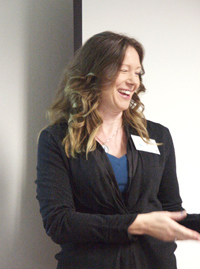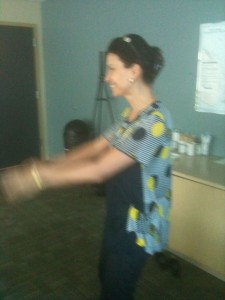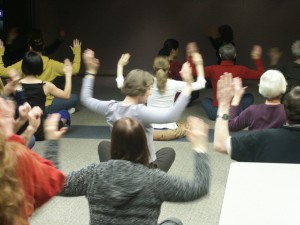 With all the yoga and meditation I do, you would think stress is something I totally take in stride. But I have faced the same challenges many of us do when it comes to managing stress. Technical writing might seem like an innocuous career, with the writers hidden away in the background, quietly working away and almost falling asleep from the dullness. It is not like that at all! We are the bridge between many different groups on a project, including developers, business and product analysts, QA and testing, project management, the SMEs, and so on. We talk to people all the time, and often face extremely tight schedules. It can get to be quite stressful if we don’t learn to balance all the demands for our time in a healthy way. My friends and family know how stressed out I can get and have given me the card shown here on two different occasions! 🙂
With all the yoga and meditation I do, you would think stress is something I totally take in stride. But I have faced the same challenges many of us do when it comes to managing stress. Technical writing might seem like an innocuous career, with the writers hidden away in the background, quietly working away and almost falling asleep from the dullness. It is not like that at all! We are the bridge between many different groups on a project, including developers, business and product analysts, QA and testing, project management, the SMEs, and so on. We talk to people all the time, and often face extremely tight schedules. It can get to be quite stressful if we don’t learn to balance all the demands for our time in a healthy way. My friends and family know how stressed out I can get and have given me the card shown here on two different occasions! 🙂
I was recently interviewed by Chatelaine magazine to tell my story of being addicted to stress. Vancouver-based Dr. Gabor Maté has written a great book on the subject, When the Body Says No: The Cost of Hidden Stress. I recommend all his books, but this one in particular woke me up to the trap I was in of creating a stressful lifestyle for myself. Quick tip: If you’re feeling stressed, take a breath. Another tip, from the Chatelaine article: sleep naked!
Image credit © 2006 Avanti Press, Inc., Box 2656 Detroit, MI 48231
 February 21 marked the 4th annual Yoga for the Office class at the STC’s Canada West Coast chapter, based in Vancouver and serving technical writers in BC and the Yukon territory. (The Society for Technical Communication is a professional organization for technical writers.) This year I added a chair to the mix. Chair yoga has become increasingly popular because the aid of the chair makes the benefits of yoga accessible to almost everyone.
February 21 marked the 4th annual Yoga for the Office class at the STC’s Canada West Coast chapter, based in Vancouver and serving technical writers in BC and the Yukon territory. (The Society for Technical Communication is a professional organization for technical writers.) This year I added a chair to the mix. Chair yoga has become increasingly popular because the aid of the chair makes the benefits of yoga accessible to almost everyone.


